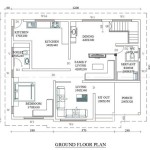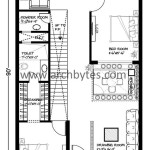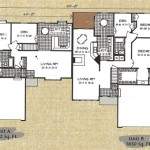Make A Floorplan Of My House: A Guide to Essential Elements
Creating a precise floorplan of your home can be a valuable asset for various purposes, such as renovations, interior design, and property listings. While it may seem daunting at first, the process can be simplified by focusing on a few essential aspects.
Measurements and Accuracy
The accuracy of your floorplan is paramount. Use a measuring tape or laser measuring device to determine the dimensions of each room, including walls, windows, and doors. Pay close attention to angles and protrusions to ensure a realistic representation.
Identify Key Elements
In addition to walls and openings, highlight other key elements in your floorplan. These may include stairs, fireplaces, built-in furniture, and major appliances. Indicate the location and size of these features to provide a comprehensive overview of the space.
Establish a Scale
Choose a scale that accurately represents the size of your house while maintaining readability. Common scales include 1:50 or 1:100, where 1 unit on the plan represents 50 or 100 units in reality. Ensure that the scale is clearly indicated on the plan.
Use Clear Symbols
To make the floorplan easy to understand, use standard symbols to represent different elements. Walls are typically drawn as thick lines, windows as squares or rectangles, and doors as arcs or rectangles with a slash. Establish a consistent legend for these symbols to avoid confusion.
Consider Furnishings (Optional)
While not essential, adding furnishings to your floorplan can provide a more detailed understanding of the space's functionality. Use scaled symbols to indicate the placement of furniture, beds, and other major items. This can be helpful for planning renovations or furniture arrangements.
Use Software or Templates
Numerous software programs and templates are available to assist with floorplan creation. These tools provide standardized symbols, measurement tools, and the ability to export plans in various formats. While they simplify the process, ensure that you have a basic understanding of the software or template before using it.
Additional Tips
Check for Obstructions: Move furniture and other items to ensure clear access for taking measurements.
Consider Elevations: If necessary, include floor-to-ceiling dimensions or even create separate elevation drawings to provide a more complete understanding of the space.
Label Rooms: Clearly label each room on the floorplan for easy identification.
Save and Share: Once complete, save your floorplan in a common format like PDF or JPG. You can easily share it for various purposes, such as sharing with contractors or displaying it online.

Floor Plan Creator And Designer Free Easy App

Floor Plan Creator And Designer Free Easy App

Make Your Own Blueprint How To Draw Floor Plans

How To Draw Blueprints For A House With Pictures Wikihow

House Plans How To Design Your Home Plan

Draw Floor Plans With The Roomsketcher App

Floor Plan Creator Planner 5d

How To Draw Blueprints For A House With Pictures Wikihow

How To Draw A Floor Plan Live Home 3d

How To Draw A Floor Plan As Beginner Edrawmax








